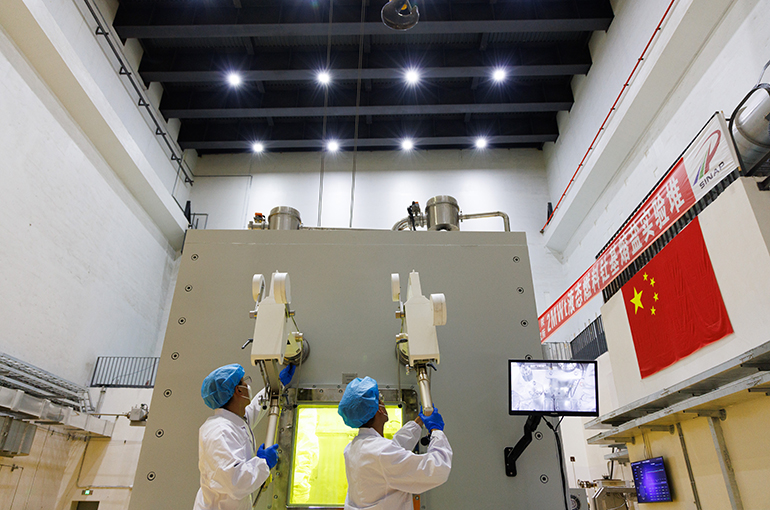 Chinese Scientists Build World's First Thorium Molten Salt Reactor; Shares of Parts Suppliers Surge
Chinese Scientists Build World's First Thorium Molten Salt Reactor; Shares of Parts Suppliers Surge(Yicai) Nov. 4 -- Chinese researchers have achieved the world's first thorium to uranium nuclear fuel conversion in a molten-salt reactor, making it the only operational reactor of its kind loaded with thorium fuel and lifting the shares of equipment suppliers involved in the project.
The Thorium Molten Salt Reactor, built by the Chinese Academy of Sciences' Shanghai Institute of Applied Physics in collaboration with other institutions in northwestern Gansu province, confirms the technical feasibility of using thorium in a molten-salt reactor nuclear energy system, SINAP announced on Nov. 1.
The global nuclear power sector generally uses uranium-235 as reactor fuel, but its reserves in nature are very limited. China's uranium resources are especially scarce, so it's highly dependent on imports for nuclear raw materials, while demand grows with the industry's rapid development.
To find an alternative to uranium-235, the Chinese researchers set their eyes on TMSR that can convert thorium-232, which is rich in natural reserves, into uranium-233 by absorbing neutrons, creating a sustainable nuclear fuel supply, SINAP noted.
Lifted by the announcement, shares of Nanjing Baose [SHE: 300402], a provider of nuclear reactor main vessels, surged by the 20 percent daily trading limit on Shenzhen's Nasdaq-style ChiNext bourse to CNY26.21 (USD3.68) as of 10.30 a.m. today, after closing up 20 percent yesterday.
Suzhou Hailu Heavy Industry [SHE: 002255], which provides safety devices for TMSR, rose by the 10 percent exchange-imposed daily trading limit to CNY10.80 a share today, while the stock of Zhefu Holding Group [SHE: 002266], a nuclear reactor control rods provider, rose 1.6 percent to CNY4.59 (64 US cents). Both firms closed 10 percent higher yesterday.
Molten-salt reactors are fourth-generation advanced nuclear energy systems that use high-temperature molten salt as a coolant, boasting inherent safety features, cool without water, run at atmospheric pressure, and deliver a high-temperature output, SINAP said. These features mean the reactors are widely recognized as the most suitable type for thorium resource utilization in nuclear energy production, it pointed out.
The two-megawatt experimental TMSR program was launched in 2011, achieving significant progress from laboratory research to the engineering verification of core materials, equipment, and technologies, SINAP noted, adding that the ultimate goal is to build a 100 MW demonstration project and realize its application by 2035.
Editors: Dou Shicong, Martin Kadiev